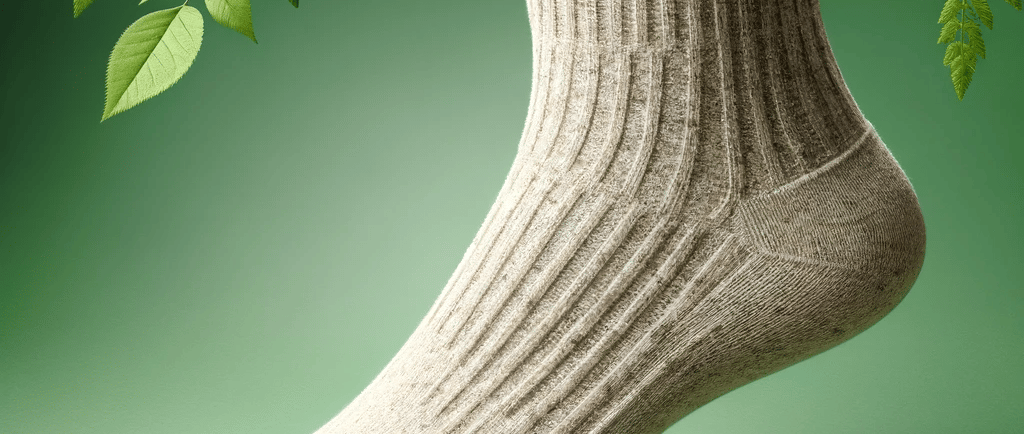Creating a wearable sock without elastane (also known as spandex or Lycra) is absolutely possible, but it requires thoughtful design and material choice to ensure that the sock is comfortable, fits well, and maintains its shape. Elastane is commonly used in socks for its excellent elasticity and recovery, helping the socks to stretch and conform to the foot without sagging. However, there are ways to design socks without elastane:
Choice of Materials: Use natural fibers with inherent stretch. Wool, for example, has natural elasticity. Some types of cotton, like long-staple cotton, can also offer a degree of stretch and resilience. Bamboo and certain types of silk can also provide a bit of natural stretch.
Knitting Techniques: Employ specialized knitting techniques that enhance elasticity. Ribbed knitting, for instance, creates a pattern of alternating raised and lowered rows, which can provide natural stretch and recovery. Looser knitting in some areas (like the top of the foot) and tighter in others (like the ankle) can create a differential stretch that helps the sock stay in place without elastane.
Sock Structure: Design the sock with a contoured fit. This can involve strategic shaping in the heel and toe areas to ensure a snug fit that conforms to the foot's natural shape. Cuff design is crucial. A well-designed cuff can hold the sock up without being overly tight. A wider cuff can distribute pressure and stay in place without needing elastane.
Reinforcement: Reinforce areas that need more support, like the heel and toe, to prevent wear and tear while providing a comfortable fit. This can be done through denser knitting or using more durable fibers in these areas.
Consumer Expectations: Educate consumers about the characteristics of socks without elastane. They might not hug the foot as tightly as elastane-containing socks, but can still be very comfortable and suitable for everyday wear. Market them for specific uses where less elasticity is required, such as casual or dress socks, rather than athletic or compression socks.
Size Range: Offer a broader range of sizes to ensure a better fit for different foot sizes, as the socks will have less stretch to accommodate varying sizes.
In summary, while removing elastane from socks does present some design challenges, it's certainly feasible to create comfortable, well-fitting, and durable socks without it. The key lies in selecting the right materials and employing specific knitting techniques and designs to compensate for the lack of synthetic elasticity.


